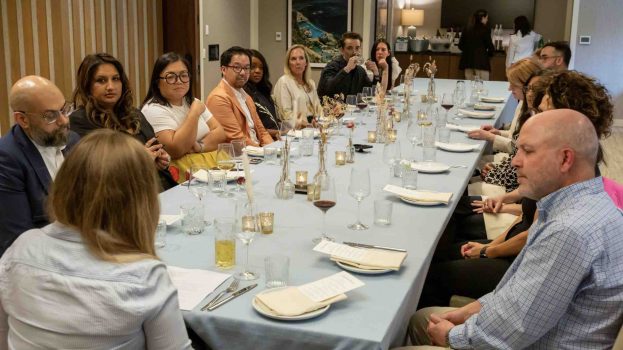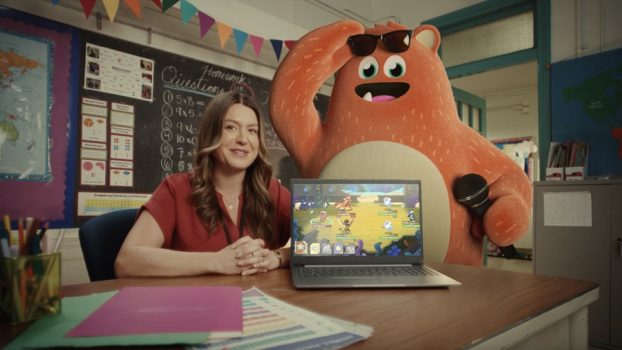Lauren Richards discovered she had ovarian cancer quite by accident in July 2014. Richards, an industry veteran and currently the founder of media consultancy Pollin8, went in for a round of routine checks when mild abdominal pain kept coming in waves. A combination of tests showed a diseased cyst but doctors were unable to tell how far the cancer had progressed until they operated on her and removed it. Eight weeks later Richards had a prognosis: she had early stage 2 ovarian cancer.
One out of 2,800 Canadian women get diagnosed with that form of cancer each year, and since most of them are diagnosed at a later stage, it’s one of the most fatal forms of cancers, with a mortality rate that gives 50% to 62% of women five years of life expectancy by the time they are diagnosed.
What followed for Richards, in addition to chemotherapy, was an education in ovarian cancer, a deadly cancer that is poorly funded, little understood and not part of the conversation around cancer in Canada. Richards had been lucky. An early diagnosis meant she could beat the disease with appropriate treatment (as she has) but most people get diagnosed when the cancer has spread too far.
“It’s not a diagnosis you want to hear,” says Richards looking back. But today, she’s recovered (as the picture, featured, attests). “I’m in remission, I’m expected to stay in remission and I was one of the lucky ones who got diagnosed early,” she says.
But the experience, which exposed Richards to how far behind research and understanding of ovarian cancer is, drew her to pull out her lady balls and find a way to heighten awareness and support for the disease to enable researchers to develop a screening test. Two years prior to being diagnosed, Richards had been looking to give back to society and was searching for a charity to help but nothing quite got her attention.
That is until she fell ill and learned all about ovarian cancer. Not surprisingly Richards was inspired to help change perceptions around the disease, and as it happened, so were the folks at Ovarian Cancer Canada, a community of 26 people dedicated to getting Canadians to take notice of, understand and support the cause for the disease.
The OCC team was already in conversation with Grey4Good, a division of Grey Canada that works with non-profits, to develop creative for a new, national campaign. The aim, says Karen Cinq Mars, VP marketing at OCC, was to shift the soft conversation around disease, death and loss to be about “people, ovaries and a whole lot of chutzpah.” Richards hopped on board to become the campaign’s media planner and strategist, providing insights on timing, space and leveraging her resources to ensure that the campaign’s message gets out to Canadians in the most effective way.
The multimedia campaign, which will debut shortly, features taglines like: “I have the lady balls to talk about it. Do you?” Richards is not part of the actual creative for the campaign, which includes actors on posters similar to the featured image.
The campaign includes 15-, 30- and 45-second video spots for TV, digital and cinema, multi-sized creative for banner or page placement in newspapers, magazine creative, digital out-of-home and radio spots.
“When there’s a special need, this industry really comes to the table. People are there for you,” notes Richards, who is on a mission to rally more media sponsors for the campaign.
The campaign’s creative demonstrates a strategic shift for the small organization, which has traditionally had taglines and titles that draw sympathy for sufferers.
A national walk that takes place in numerous cities on the same day every September is titled, “Walk for Her.” Now the organization is shifting tactics.
“What we really wanted to do is change the conversation with a bolder approach,” says Cinq Mars. An earlier campaign strategy took a soft approach with a focus on mothers. But when four other major campaigns around mothers launched, the Grey team felt that OCC’s campaign would get drowned out by bigger media campaigns.
“We quickly realized that we had to take something that was very clinical into a more conversational place,” explains Andrew Carty, VP, strategy and innovation at Grey Canada. “We decided early on that we should focus not on what ovaries are but what they do.” The team began exploring a campaign around women as mothers and child-bearers but quickly discovered that that was a “well-trotted space.”
“We needed something that was going to hit people over the head because this is a disease that has been ignored,” he adds.
Indeed, there is no proper testing for ovarian cancer. Pap smears and ultrasounds don’t detect it. Because very little is known about it, patients and doctors alike often dismiss it.
Doctors don’t even know enough about it, explains Darlene Remlinger, VP, managing director, Grey Toronto, who also felt that the high rate of mortality associated with the disease – five Canadian women die from it each day – combined with the lack of awareness about it, has traditionally left the cause with few advocates.
The only way to change that conversation was to raise a slogan that could be heard above the din of other campaigns, so the team decided to focus on strength rather than weakness, attaching the “lady balls” tagline to all creative.
The shift was a big one for the organization that has previously worked on quieter, more traditional and much smaller campaigns. But as Cinq Mars says OCC was ready to do something bigger.
Remlinger says that her team liked that “lady balls” had a kind of street credibility and urban usage that could be used to change up the conversation. “[And it goes ] beyond the metaphorical association of what it means to have ‘lady balls’… it’s also functionally true – we do have gonads.”
The “Lady Balls” campaign will be live shortly and for Richards the experience is just what she was searching for when she was looking for a way to match her unique skillset with a strong cause.
“Working on this campaign has been so good for my soul. Being able to apply my experience and the relationships I have built through my career has been life-changing. As I’ve reached out to the sales community and told them my story, and the facts about ovarian cancer, their response has been nothing short of amazing.”
From Media in Canada
























